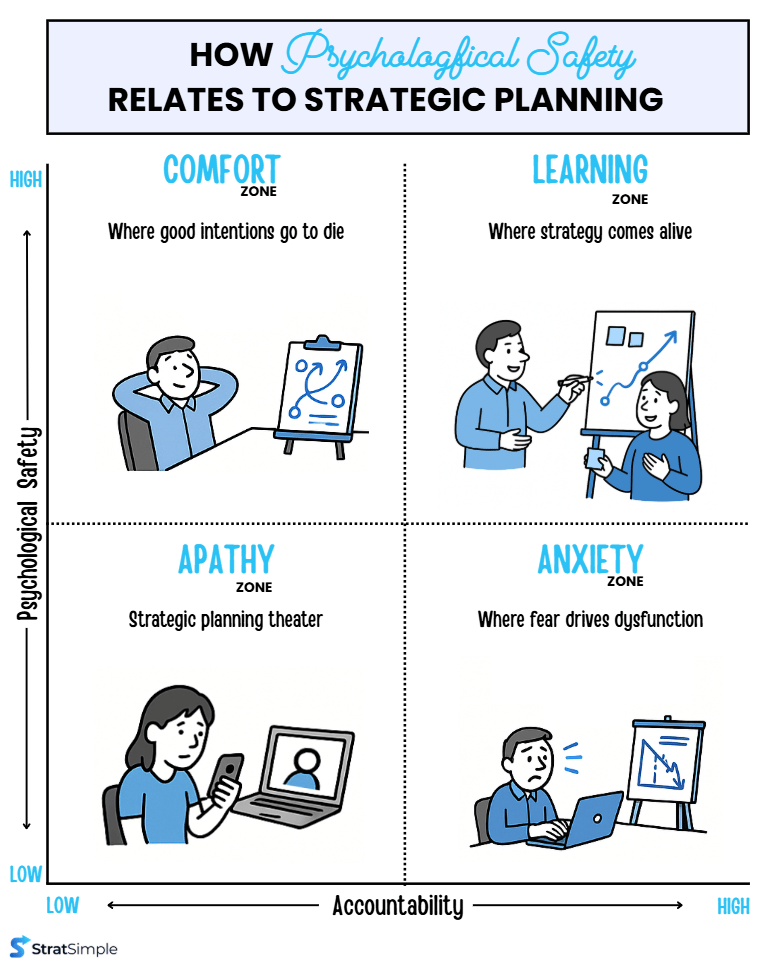
Table of Contents
When "Doing Our Best" Isn't Good Enough
Let's tackle an uncomfortable truth: In the nonprofit world, accountability is sometimes treated like it's the enemy of compassion.
"Everyone's already working so hard." "We're all at maximum capacity." "How can we ask for more?"
Here's the thing - this mindset is backwards. When your mission is helping the most vulnerable members of our community, accountability isn't optional. It's essential.
In the corporate world, missing goals might mean smaller bonuses. But when you are truly a purpose-driven organization a missed goal can have bigger impact. Someone goes hungry. A family stays unhoused. A child remains unsafe. The stakes couldn't be higher.
So when we identify our most important strategic objectives - the handful of things that will move our mission forward - we can't afford to let "busy" become the enemy of "important." These aren't nice-to-have goals. They're the difference between fulfilling our promise to our communities or falling short.
But here's where it gets tricky…
How do we hold people accountable for strategic goals when everyone is already overwhelmed?
Enter Dr. Amy Edmondson and her groundbreaking research on psychological safety. You might have heard about Google's "Project Aristotle" - a massive study of what makes teams effective. The surprising answer? It wasn't talent, resources, or even experience. The single biggest predictor of team success was psychological safety - the ability to take risks, show vulnerability, and ask for help without fear.
But there's a crucial piece many people miss: psychological safety alone isn't enough. Edmondson's research shows that high-performing teams need BOTH psychological safety AND high performance standards.
We’ve adapted Edmondson's framework to show how these dynamics play out in strategic execution:

The Four Zones of Strategic Planning
Learning Zone (High Safety + High Accountability)
Where strategy comes alive
Teams here embrace honest conversations about progress. Monthly OKR check-ins become problem-solving sessions, not performances. When objectives go off-track, people raise their hands early - because they know the response will be "How can we help?" not "What went wrong?"
Leaders model vulnerability by sharing their own struggles. Cross-functional teams thrive because shared accountability means shared solutions. And critically, failure becomes fuel for learning, not fodder for blame.
Comfort Zone (High Safety + Low Accountability)
Where good intentions go to die
This quadrant feels nice but accomplishes little. Strategic plans become wish lists. Check-ins are feel-good sessions where everyone agrees the goals matter, but no one owns outcomes. "We're all doing our best" becomes code for "We're not hitting our targets, and that's okay."
Without accountability, even the most thoughtful plans gather dust while urgent tasks consume every day.
Anxiety Zone (Low Safety + High Accountability)
Where fear drives dysfunction
Here, people hide problems until they explode. Strategic updates become highlight reels - all wins, no struggles. Staff work in silos, protecting themselves from blame. Innovation dies as people stick to "safe" approaches. Burnout runs rampant as individuals try to carry impossible loads alone.
Check-ins feel like interrogations. Goals are set artificially low to guarantee success. The organization might hit some targets, but at tremendous human cost.
Apathy Zone (Low Safety + Low Accountability)
Strategic planning theater
The worst of both worlds. Organizations here go through the motions - annual planning retreats that change nothing, copy-pasted goals from last year, stakeholder input that goes nowhere. Staff disengage ("Leadership will decide anyway"). Mission drift accelerates as the urgent perpetually defeats the important.
Purpose-driven people leave for organizations that actually live their values.
What does effective strategic plan implementation actually look like in practice?
The path forward is clear: We need to cultivate environments with both high psychological safety AND high accountability. Here's how:
- Create structured candor. Build regular rhythms (monthly OKR check-ins, quarterly retrospectives) where honest assessment is expected and supported.
- Model vulnerability from the top. When leaders share their struggles with strategic goals, it gives everyone permission to do the same.
- Celebrate learning, not just wins. Make "What did we learn?" as important as "What did we achieve?"
- Build cross-functional teams for strategic objectives. Shared ownership creates natural support systems and creative problem-solving.
- Separate performance from blame. When goals aren't met, focus on systems and processes, not individual fault.
- Make help-seeking heroic. Recognize people who raise challenges early, before they become crises.
The Bottom Line
Your mission is too important for anything less than full commitment to your strategic priorities.
The magic happens when we create environments where people feel safe enough to be honest about struggles AND accountable enough to find solutions together. That's when strategic plans transform from documents into results.
Because when the stakes are this high, "doing our best" means creating conditions where our best can actually happen.



.png)


